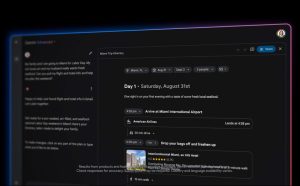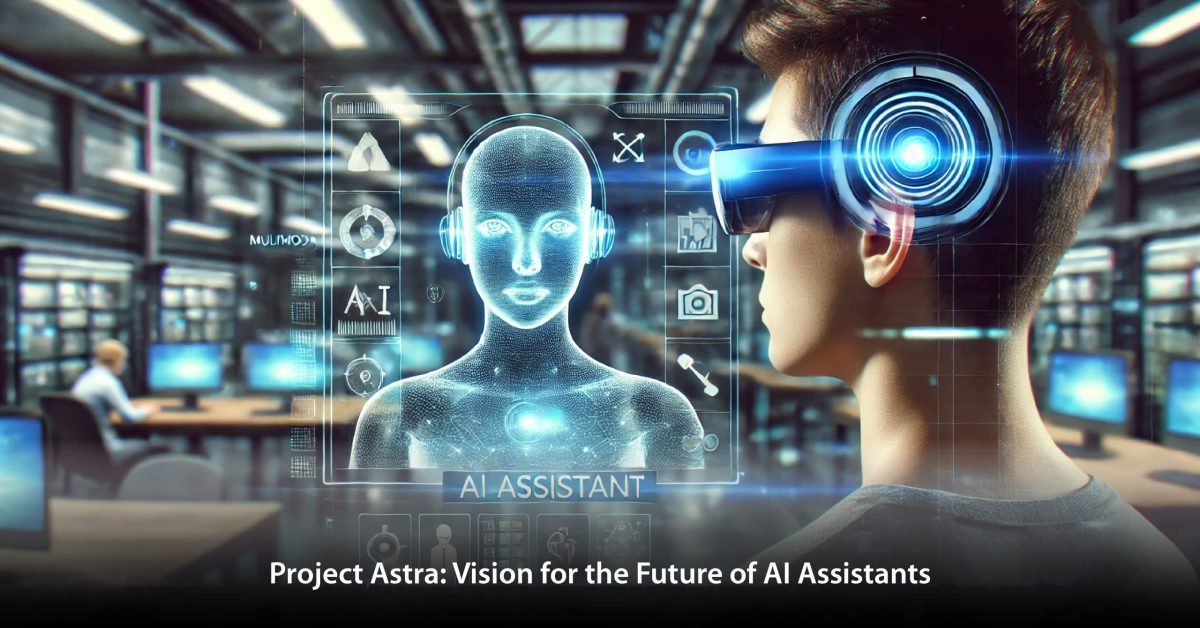Project Astra will integrate the digital world we live in with intuitive voice commands, so using them is effortless and easy.
Anyone who has tried, in vain, to locate their car keys and has felt as though their mind is full to the brim with all things to remember? We’ve all been there. But can you imagine if technology could understand and help with those kinds of everyday problems?
Picture this: you ask your AI assistant where you left your keys. Instead of answering your question, it tells you where it saw that you left them through your phone’s camera before. Blade Runner stuff is now real and very practical.
In fact, Google is going to set the course for this amazing future with Project Astra. Next-generation AI assistant—draw a clear picture that AI is eventually going to be installed in our day-to-day lives. Just imagine talking with your device like a friend and doing everything at an amazing speed. Now, Astra can analyze and respond with text, speech, images, and even videos, so it can guess what you may want to do and offer to help before you even ask. That’s like a tailored personal assistant—programmed inside-out based on how you are—to make life easier and more efficient.
All-Purpose Innovation

Project Astra’s primary innovation is the integration of “multimodal processing,” which enables Astra to accept inputs from both the phone’s microphone and camera in addition to voice commands. This dual capability enables Astra to be more perceptive of your environment in a much broader sense.
Astra was endowed with a “visual memory” feature, thanks to which it can learn the context and provide even deeper, more thoughtful answers. One can no longer have unclear talks or poor instructions that are hard to comprehend or follow as they conflict with one another. Project Astra: good integration of the elements of the visual world together with the verbal commands makes the system simple and effective.
Beyond “Hey Google…”
Unlike the regular dialogue observed in Project Astra, participants are advised to think and come up with creative ideas. Similar to illustrating a plain table on paper, Astra is able to identify your drawing in real time and comprehend your intended plan; it proceeds to recommend design names or designs in a related style based on the visual cue. Reflecting on Sundar Pichai, the CEO of Google, “Astra is a monumental step forward in artificial intelligence because of the use of a camera to analyze and respond to the actual world. It feels like we are standing at the precipice of the digital and physical realms.”
This creates a higher level of engagement with AI assistants, as instead of stringing commands to “communicate” with the device, people talk to it as a helpful partner, so creativity and innovation grow. At the Google I/O event, Astra showcased multiple interactive modes, one of which contains “Storyteller,” which creates plots using detected items, and “Pictionary,” in which Astra correctly identifies objects drawn by the user. Such mutual cooperation helps the AI assistants to be more engaging than the standard and rather monotonous conversation of most AI bots, which is limited to basic question and answer coordination.
Here are some real-time examples of Project Astra that could transform how we use technology
DIY Dilemma Solved: Stuck on the peculiarities of furniture assembly? Astra analyzes the image and finds out what part of the object is in the picture, and then suggests how it can be assembled, suggesting useful videos that can clear up confusion or some other approaches to ensure that the assembly is fun and not aggravating.
Fashion Guru in Your Pocket: Needless to say, retrospectives prove attractive to both management and employees unsure of what to wear. Astra checks your wardrobes and provides the latter with fashionable outfits for an occasion, the latest fashion tips, as well as the appropriate accessories to wear.
Breaking Language Barriers: Planning a trip out of the country? Just aim your phone with Astra at signs with text or the menu in a restaurant, and you’ll translate the text and communicate in the language of the country immediately.
Mobile Fitness Coach: Struggling with the idea of doing workouts while using many applications? Astra tracks the number of times, observes the form, identifies the body movements through image processing applications, and acts as a fitness trainer for achieving fitness goals.
Seeing Eyes for the Visually Impaired: Grocery Shopping The Way Astra gives product descriptions on the shelf, product name, product brand, and expiration date of the products. It also plays the role of leading the shoppers through the supermarkets to identify the required ingredients, thus increasing their independence.

A Glimpse into the Future
The still-young Project Astra can be described as a project in its incubation, but by the end of this year, Google intends to implement some of the Gemini technologies. This move underscores the fact that the use of AI assistants will soon be part of everyday reality, offering relevant information and contributing to the formation of decisions based on daily interaction. Project Astra is part of the larger goal outlined by the head of Google’s DeepMind division, Demis, to fulfill what he calls a “universal assistant.” Also, the CEO of Google teased that Astra is going to be merged with smart glasses, which implies that Google Glass can come back into the market with the help of AI. If these glasses prove as efficient as shown, they can be a rival to Meta’s Ray-Ban smart eyewear.
Obstacles Ahead
Of course, it is self-evident that there are advantages and disadvantages to such kinds of developments. Another vital guarantee for the successful implementation of Astra is compliance with the users’ privacy and minimizing worries about data harvesting. Also, the functional characteristics must also be improved in order to attain higher levels of security resistance. However, as it was observed during the demo, Astra has a very fast response time, but when it’s incorporated into a real-life application, it may have some level of delay. Thus, Project Astra can work on creating a thoughtful approach to AI and making it safe and easy to use.
Ushering in a New Era
Perhaps it is necessary to stress that the benefits and shortcomings that are linked to such kinds of developments are numerous. Therefore, decision-making anything to do with users’ privacy and issues to do with data collection shall be among the core principles of Project Astra. Furthermore, there is a need to enhance the functional attributes, with special regard to the attainment of high security standards. During the application, it unsuccessfully proved a great response time; however, when actually used in the applications in Astra, several issues with response time may occur. Thus, the difficulties stated above can be effectively addressed and create the basis for a careful and user-friendly approach to the use of AI in Project Astra.
